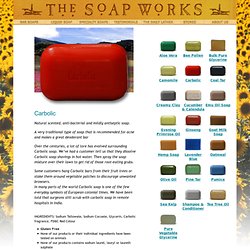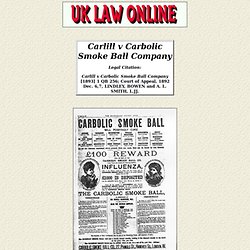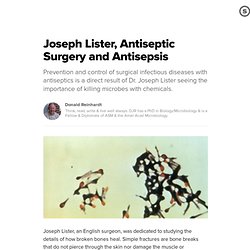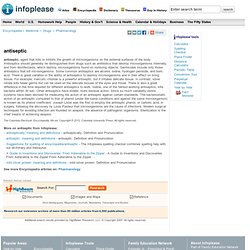

Household Products Database - Health and Safety Information on Household Products. Glycerin & Thymol Antiseptic Mouthwash. Phenol%20Hazards%20and%20Precautions. Phenol_5_Glycerin. Carbolic Soap. Carbolic Natural scented, anti-bacterial and mildly antiseptic soap.

A very traditional type of soap that is recommended for acne and makes a great deodorant bar Over the centuries, a lot of lore has evolved surrounding Carbolic soap. We’ve had a customer tell us that they dissolve Carbolic soap shavings in hot water. Then spray the soap mixture over their lawn to get rid of those root-eating grubs. Some customers hang Carbolic bars from their fruit trees or stake them around vegetable patches to discourage unwanted browsers. INGREDIENTS: Sodium Tallowate, Sodium Cocoate, Glycerin, Carbolic fragrance, FD&C Red Colour Gluten Free None of our products or their individual ingredients have been tested on animals None of our products contains sodium laurel, lauryl or laureth sulphate All of our soaps are phosphate free.
Joseph Lister and antiseptic surgery. ABPI - Resources for Schools "[These webpages have a] wealth of information on biotechnology which puts its uses into context for students.

" - Teacher View page Infectious diseases - timeline Page 5 of 8 Jump to the Page Joseph Lister and antiseptic surgery Joseph Lister was a Scottish surgeon who picked up the work of Louis Pasteur and used it to change the success rates of surgery. Lister had heard that carbolic acid had been used to get rid of a cattle parasite in fields, and to treat sewage. Lister in theatre Lister went on to develop an antiseptic spray which was used in operating theatres during surgery to keep the wound clean. Lister's work revolutionised surgery once his aseptic techniques were accepted. Return to Timeline Section Contents Map Parasite Organism that feeds off another living host and causes it some damage.
Aseptic. TCP Liquid Antiseptic (Phenol; Phenols Halogenated) Chefaro. Carlill v Carbolic Smokeball Co., UK Law Online. Facts Contract - Offer by Advertisement - Performance of Condition in Advertisement - Notification of Acceptance of Offer - Wager - Insurance - 8 9 Vict. c. 109 - 14 Geo. 3, c. 48, s. 2.

The defendants, the proprietors of a medical preparation called "The Carbolic Smoke Ball," issued an advertisement in which they offered to pay 100 to any person who contracted the influenza after having used one of their smoke balls in a specified manner and for a specified period. The plaintiff on the faith of the advertisement bought one of the balls, and used it in the manner and for the period specified, but nevertheless contracted the influenza:- Held Held, affirming the decision of Hawkins, J., that the above facts established a contract by the defendants to pay the plaintiff 100 in the event which had happened; that such contract was neither a contract by way of wagering within 8 9 Vict. c. 109, nor a policy within 14 Geo. 3, c. 48, s. 2; and that the plaintiff was entitled to recover.
Marketed to Protect against "influenza and other ailments", The Carbolic Smoke Ball was ineffective against Infection. What are the problems with using phenol as an antiseptic. Phenol has antiseptic properties, and was used by Sir Joseph Lister (1827–1912) in his pioneering technique of antiseptic surgery, though the skin irritation caused by continual exposure to phenol eventually led to the substitution of aseptic (germ-free) techniques in surgery. Lister decided that the wounds themselves had to be thoroughly cleaned. He then covered the wounds with a piece of "rag" or "lint"[8] covered in carbolic acid. It is also the active ingredient in some oral analgesics such as Chloraseptic spray.
Repeated or prolonged skin contact with phenol may cause dermatitis, and the substance is a suspected carcinogen. The substance and the vapor is corrosive to the eyes, the skin and the respiratory tract. Exposure of the skin to concentrated phenol solutions causes chemical burns which may be severe; in laboratories where it is used, it is usually recommended that polyethylene glycol solution is kept available for washing off splashes. Internet History Sourcebooks. Suite101. Joseph Lister, an English surgeon, was dedicated to studying the details of how broken bones heal.

Simple fractures are bone breaks that do not pierce through the skin nor damage the muscle or connective tissues. Lister noted simple fractures heal without problems or complications. Compound fractures that broke through the skin were another story. These more severe fractures damaged connective tissue, muscle and skin and the tissues often became infected and diseased. Infectious Disease Dangers and Consequences of Compound BoneFractures Typical known pathogenic (disease-causing) bacteria are Staphylococcus, Streptococcus and Clostridium. Gas gangrene is a difficult, terrible disease of oxygen-deprived tissues. Pasteurs Ideas About Microbes were Important Foundations for Antiseptic Surgery. Antiseptic. Antiseptic, agent that kills or inhibits the growth of microorganisms on the external surfaces of the body.

Antiseptics should generally be distinguished from drugs such as antibiotics that destroy microorganisms internally, and from disinfectants, which destroy microorganisms found on nonliving objects. Germicides include only those antiseptics that kill microorganisms. Some common antiseptics are alcohol, iodine, hydrogen peroxide, and boric acid. There is great variation in the ability of antiseptics to destroy microorganisms and in their effect on living tissue.
For example, mercuric chloride is a powerful antiseptic, but it irritates delicate tissue. The Columbia Electronic Encyclopedia, 6th ed. More on antiseptic from Infoplease: